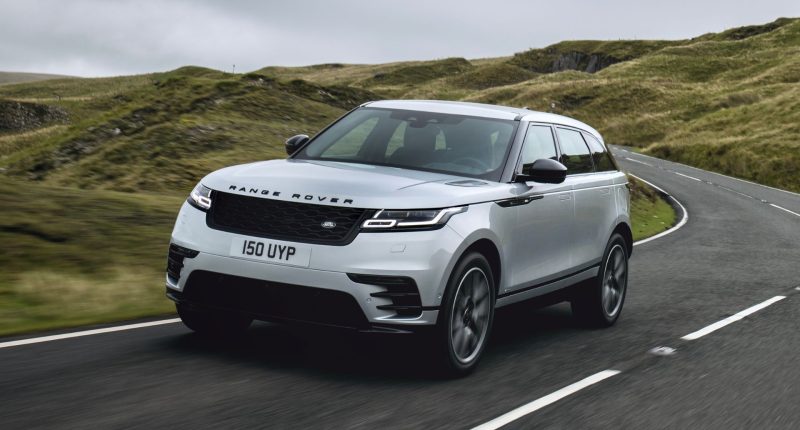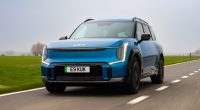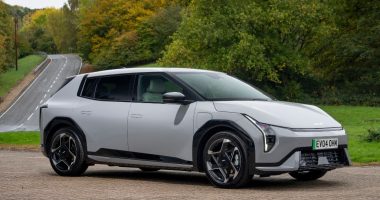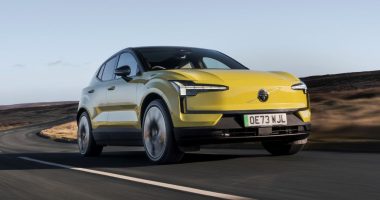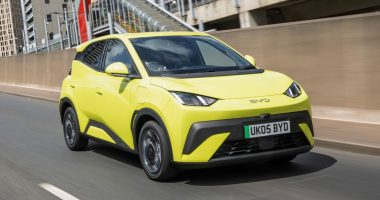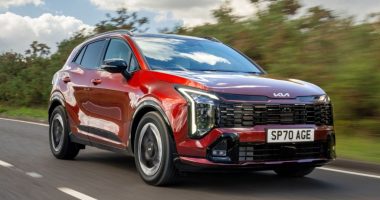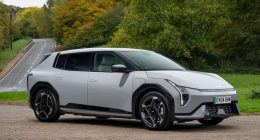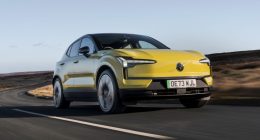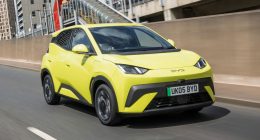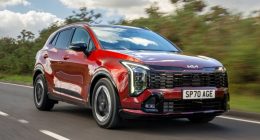Every fuel has its place and, when considering diesel, the case for pairing ‘heavy fuel’ with a large Sports Utility Vehicle (SUV) such as the blink-and-you-miss-it facelifted Range Rover Velar makes a lot of sense once you sit down with pen and paper and start to crunch the all-important numbers.
Land Rover is – rather belatedly – making the transition to mild and plug-in hybrid technology, with full-fat Battery Electric Vehicles currently being readied for launch in the very near future. Yet despite the assurances around efficiency and range, petrol-hybrids and full electric are still alien concepts to some drivers.
That brings us back to diesel which, for the record, has never been cleaner, less thirsty, nor as quiet – even in 3.0-litre, six-cylinder turbocharged guise. That was the configuration Land Rover kindly loaned me during a short break to England with my son, and it did not disappoint, both in terms of real-world performance and miles covered on a single tank.
Badged ‘D300’ as a nod to the 300PS (or 296bhp in old money) it develops, the engine has oodles of torque from low down in the rev range and effortlessly gets you up to speed (0-60mph takes 6.1 seconds) without breaking as much as a sweat. Land Rover says you can expect to hit the mid-30mpg; I cracked 40 at a steady speed on longer motorway jaunts and enjoyed the serene manner in which the Velar wafted us from A to B.
The larger diesel is considerably more expensive than the 2.0-litre mild hybrid alternative to the tune of £5,000. True, that is a lot of money, but a SUV that was launched in the summer of 2017 and is as stylish today as it was all those years ago, the V6 is the natural choice when factoring in its 2.7 tonne kerb weight.
For housekeeping purposes, UK buyers can also choose from a brace of mild hybrid petrol motors: a 3.0-litre (P400) developing 406bhp and a 2.0-litre plug-in hybrid (P400e) that is supported by a 105kW electric motor that generate a combined 389bhp. The battery in the part-EV Velar has grown in size to 19.2kW, giving a longer electric-only range of 33-miles. It can also be recharged from 0-80% in half-an-hour thanks to a 50kW charging capacity.
Regardless of what you settle for, power is handled by an eight-speed automatic transmission that is decisive in the way it selects a higher or lower gear. It could be smoother in stop-start traffic scenarios, though it is far from disgraced when compared to offerings from BMW, Audi, and Mercedes.
There is the ability to over-ride the transmission and make gear shifts via a set of paddles behind the steering wheel if you delve into the ‘Dynamic Control’ function and choose Sport or Dynamic over the standard Comfort setting. On pricier models, this also hardens the ride by stiffening up the active dampers; on ‘SE’, coil springs are the order of the day meaning there is a less polished feel to how it rides and handles. Buyers can request the ‘Dynamic Handling Pack’ at a snip over £1,500 if air suspension, adaptive dampers and red-coloured brake calipers is their thing.
Flicking to sportier Dynamic guise – with the optional 21-inch alloys (£840) fitted – the Velar is an energetic and responsive SUV that is kept hunkered to the road, cornering keenly and confidently. The steering also loads up nicely around twists and turns but it’s far from an involving experience.
With the springs stiffened up, it doesn’t roll and pitch as the pace quickens and, oddly, even rides better than in the Comfort setting, cushioning you from typical UK road imperfections with ease. It does have its limitations, so don’t expect the same level of plushness as its bigger Ranger Rover brother.
Having air suspension also has its benefits, chiefly the ability to lower the car by 10mm – a pretty handy feature when it comes to loading and unloading items into the competitively-sized 632-litre boot – and raise the body by 25mm over the normal height when you stray off the beaten track.
Clean or dirty, the Velar is still one of the sexiest SUVs on the market. Like the Evoque, it has aged gracefully. If anything, like a fine wine, it has gotten better with age, helped by a reductive, pared back approach to design by the man who penned it – Gerry McGovern. So, with it being a case of, ‘If it isn’t broke, don’t fix it’, the up-dates for the facelifted model are subtle at best on the outside and include a new grille, a tweaked LED headlight signature on certain models, fresh alloy wheel profiles, and horizontal reflectors for the rear bumper that replace the previous vertical pieces.
As before, owners have endless personalisation options to choose from depending on which of the four models – ‘S’, ‘Dynamic SE’, ‘Dynamic HSE’, ‘Autobiography’ – they pick. Finished in ‘Varesine Blue’ (£760), our test car’s options list included privacy glass (£450), a black contrast roof (£700) and a full-sized sliding panoramic tinted glass roof to push the list price to an eye-popping £72,665.
Inside, you will find Land Rover’s slick ‘Pivi Pro’ infotainment system, a set-up that makes the lower screen redundant, with the move freeing up useful storage for keys, cash and phones. All controls needed to operate the climate, seating and audio functions are readily available and easy to pick out on the 11.4-inch display, and with it being curved the screen’s visibility is always good, even in direct sunlight should you choose to open the panoramic glass roof.
Shortcut buttons for other commonly used features like media, navigation, window demisters and cameras are permanently visible, too, and smartphone users who appreciate seamless connectivity are sure to appreciate the ability to bypass the car’s own software and rely on Apple CarPlay or Android Auto, wire-free.
Quality is strong if not class-leading due to questionably cheap and harsh plastics being deployed at eye-level and below; a point in case is the ‘Shadow Grey Ash’ finish used for the lower dash and around the stubby gear lever. Seating space in the front is generous but noticeably less so in the rear if the driver and passenger are six footers, and despite the Velar’s width, the second row is strongly recommended for two adults as the centre arm rest eats into leg and foot room for those who end up sitting in the middle of the rear bench.
